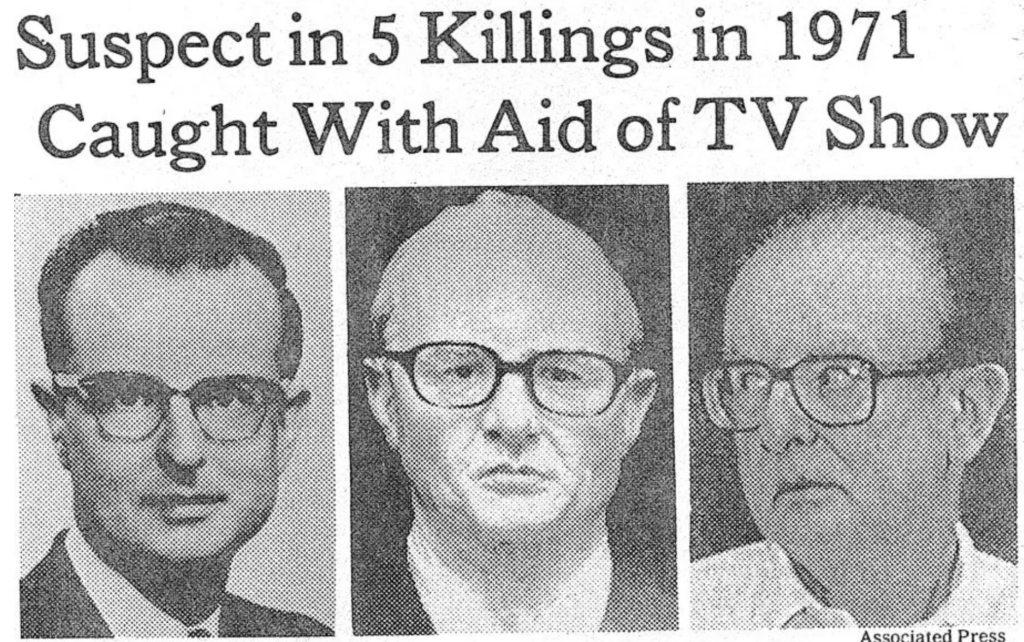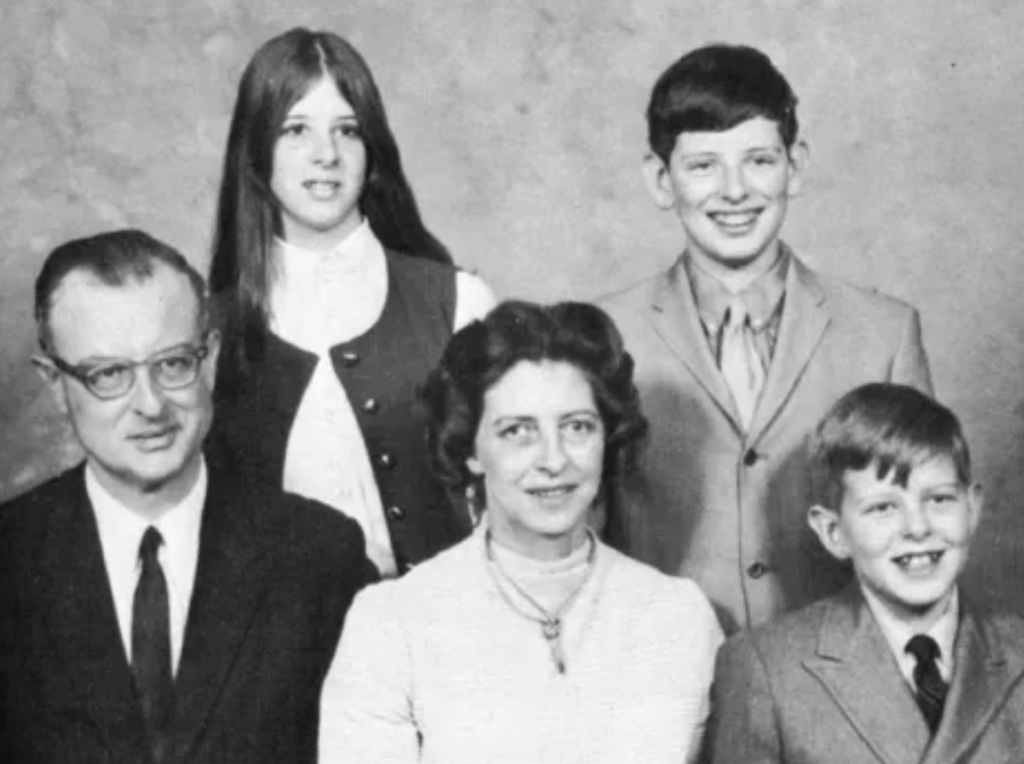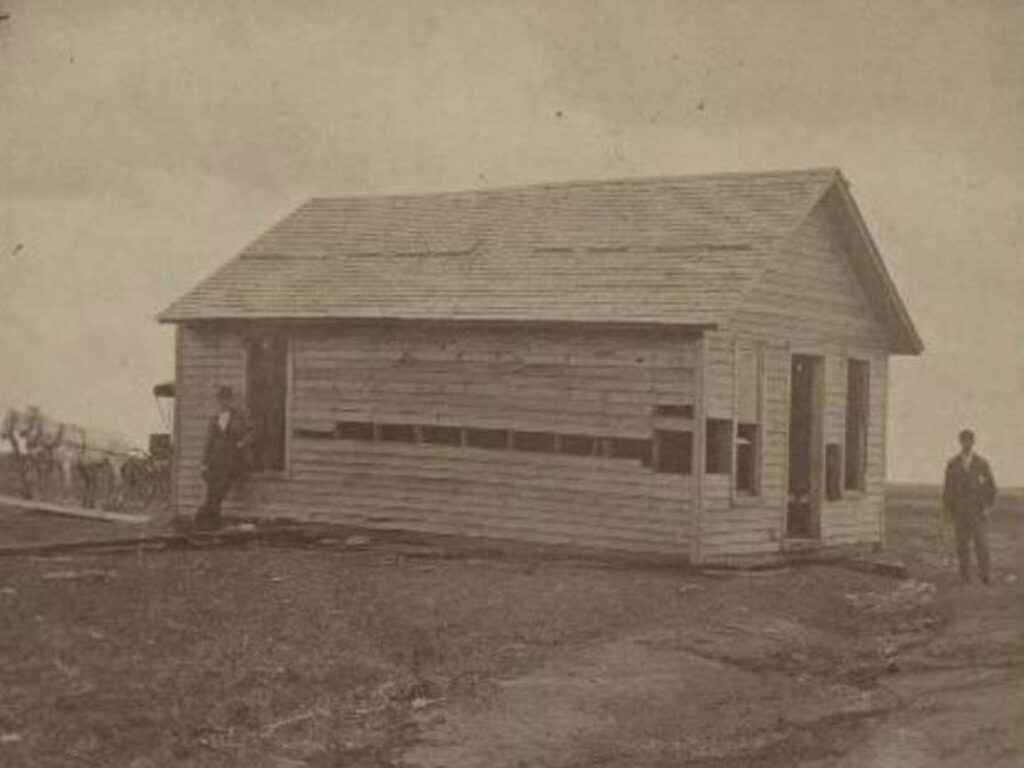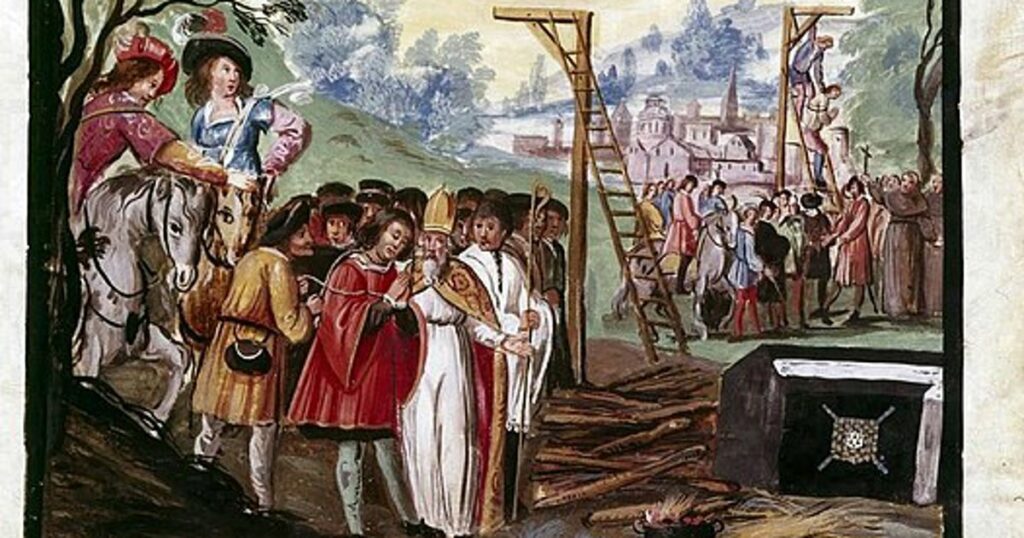Last updated on April 28th, 2024 at 07:29 pm
The name John List may not carry the same notoriety as some of the more infamous serial killers in history. But his story has intrigued and perplexed those with a fascination for the darker side of human nature.
During the winter of 1971, the List family murders dominated the headlines in the state of New Jersey. The event sent fear and shockwaves through the small community and gripped the nation’s attention.

Background
John Emil List was born on September 17, 1925, in Bay City, Michigan. He grew up in a strict Lutheran household, which instilled in him a strong sense of traditional discipline and duty.
The day List graduated from high school he enlisted in the U.S. Army where he became a laboratory technician during World War II. After the war ended he enrolled in the University of Michigan where he earned a bachelor’s degree in business administration and a master’s degree in accounting.
When America became involved in the Korean War in 1950, List was recalled to active duty. He met his future wife Helen Morris Taylor at Fort Eustis in Virginia.
She was the widow of an officer killed in action and lived nearby with her daughter, Brenda. Helen and John married the following year and the family relocated to California where John got a comfortable job as an accountant in the Finance Corps.
During his second tour, List worked as an audit supervisor at a Kalamazoo paper company. They settled here and had three children.
In 1960, his stepdaughter Brenda married and moved out. This prompted List to relocate the remaining family to Rochester, New York, where he assumed a position with Xerox.
In 1965, List accepted a role as vice president and comptroller at a bank in Jersey City, New Jersey. He relocated again with his wife, children, and mother to Breeze Knoll, a grand 19-room Victorian mansion in upscale Westfield, New Jersey.
The List Family Murders
On the fateful morning of November 9, 1971, John List’s religious fanaticism and dire financial straits reached a tipping point. He decided to go through with the plan to kill his entire family to “save them” from eternal damnation.
John waited until his children were at school. Then, with his 9mm Steyr 1912 semi-automatic handgun and his father’s Colt .22 caliber revolver, he began his murder spree. His first victim was his wife, Helen, 47, whom he shot in the back of the head. Then, his elderly mother, Alma, 84.
He then waited for his daughter Patricia, 16, and younger son Frederick, 13, to return home from school. As they entered the home he shot each of them in the back of the head. Having no qualms about what he had just done, List made himself a sandwich and then went to the bank to close his and his mother’s bank accounts.
After closing the accounts, he drove to Westfield High School to watch his elder son John Frederick, 15, play in a soccer game. After driving John Frederick home, List shot him repeatedly. Evidence shows that John Frederick was not killed instantly by the first shot and attempted to defend himself.

List placed the bodies of his wife and children on sleeping bags in the mansion’s ballroom and cleaned the crime scene. He then proceeded to remove his face from all of the family photos and tuned the radio to a religious station.
List left behind a haunting five-page letter addressed to his pastor, discovered on the desk in his study. In the letter, he confessed to witnessing what he believed to be an overwhelming amount of evil in the world. This perceived evil compelled him to take his family’s lives and deliver their souls from impending damnation.
The murders were not discovered until nearly a month later on December 7 when neighbors, who noticed that the lights in the house were on day and night, started seeing the lights burn out one by one.
John List’s Disappearance
Following the List family murders, John List first moved to Denver. He assumed the name Robert Peter Clark and got a job as an accountant. He fell into a new lifestyle and surrounded himself with new friends, going so far as running a carpool for his Lutheran church.
It’s at this church where he met and fell in love with Delores Miller. They were married in 1985 and lived outside of Denver for a few years before relocating to Virginia where List got another accounting job.
As Peter Clark, List was able to fool those closest to him, even his new wife, for nearly two decades. John List thought he had pulled off the ultimate disappearing act – until one television program brought everything down around him.
Discovery and Capture
As the years went on and List continued to live his new life, it seemed, at least to him, that he had gotten away with murder. However, eighteen years after the List family murders, the crime was retold on the new television program, America’s Most Wanted.
The episode showed an age-progression bust rendered by an artist to show what List would have looked like in 1989. By a twist of fate, a man who was once neighbors with List back in Denver, recognized him on the show and called the authorities.
Less than two weeks after receiving the tip, law enforcement officers arrested List at a Richmond accounting firm where he was employed.
Reasons for the Murders
Following List’s arrest, the gruesome details of the case gripped the collective imagination of the nation. Newspapers, television shows, and true crime enthusiasts couldn’t get enough of the chilling narrative.
However, the one question that was on everyone’s minds was “Why?”
During his trial, List talked openly and provided a chilling insight into his motivations. He testified that his financial struggles had escalated to a breaking point after he lost his job following the shuttering of the Jersey City bank where he worked.
List admitted during his trial that he was humiliated by his financial woes and was desperate to hide his shame from his family and friends. In order to hide the truth from his family, List stuck to his usual routine. But instead of going to work as his family thought, he would take job interviews or spend the day reading newspapers at the train station until it was time to go home.
To keep up the act and keep the debt collectors at bay, List continued to divert funds from his mother’s bank accounts. However, the family’s financial problems only got worse as the year progressed. Things got so bad that List had to ask his children to get jobs under the pretense of instilling character and responsibility in them.
List’s life was further complicated by his wife’s alcoholism and her long-concealed tertiary syphilis, which she contracted from her previous husband and hid for nearly two decades.
Helen’s health deteriorated over the years, but her condition remained hidden until 1969, when a thorough examination disclosed her ailment. By then, her untreated syphilis, combined with heavy alcohol consumption, had transformed her into an “unkempt and paranoid recluse” who frequently humiliated List in public.
Psychological Analysis
During John List’s trial, the court-appointed psychiatrist concluded that List was afflicted by obsessive-compulsive personality disorder. According to the psychiatrist’s evaluation, List perceived only two viable solutions to his dire circumstances: either resort to welfare or murder his family and send them to heaven.
He adamantly rejected the option of welfare.
According to the psychiatrist, List’s mindset was deeply influenced by his father’s teachings of traditional gender roles, masculinity, and familial responsibility. List believed that a “real man” was obligated to provide for his family. Accepting welfare was not only seen as an affront to this ideal but also an embarrassment to the family.
Trial and Death
During his trial, List tried to appeal his convictions by claiming that his military service in World War II and the Korean War had left him with post-traumatic stress disorder. He claimed that this impaired his judgment.
Additionally, he asserted that the letter he left at the crime scene, essentially serving as his confession, should be considered a confidential communication to his pastor and therefore inadmissible as evidence. However, a federal appeals court ultimately dismissed both of these arguments.
In 1990 John List was found guilty of the murders of his mother, wife, and three children. He was convicted on five counts of first-degree murder and sentenced to five consecutive life sentences. List spent the remainder of his life behind bars until he died in 2008 from complications from pneumonia.
References
‘America’s Most Wanted’ killer John List remains infamous bogeyman in his Michigan hometown
John List

